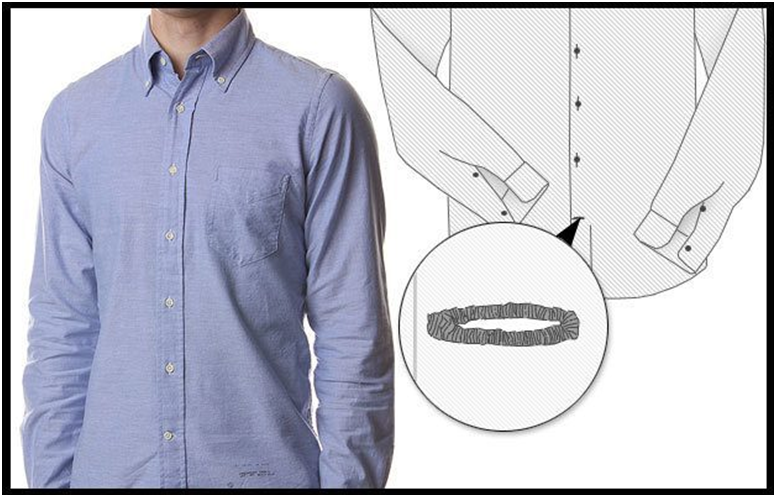
ULTIMATE GUIDE TO THE FORMAL SHIRT, WITH STYLE AND SELECTION TIPS
The bible of the shirt posted a little over a year and a half ago is one of the most visited articles on the site.
Unfortunately, it is not really up to date, and it is also quite incomplete: it was time to create a larger article, which is a real guide to the men’s shirt .
The objective is to be as complete as possible, so I did not go into details for certain more incidental aspects of the shirts so as not to make the article boring.
You will therefore find all the criteria to choose your shirt, advice on how to wear it and check that it suits you, but also (and ESPECIALLY) the brands that matter.
We will talk about recent brands, which have a relatively good value for money (with classics like Hast or Cavalier Blu, but also other more confidential brands).
You will also discover small Neapolitan brands very little known, but that it is easy to buy on eBay, Yo ox or other restocking sites. You just need to know their name, and to know a little where to look
I WELL CHOOSE YOUR MEN’S SHIRT
1 THE BUDGET
This is a fundamental criterion, but one that is too rarely talked about: a men’s shirt is neither a jacket, nor a coat, nor a pair of shoes . She will wear out and you will have to replace her: how to devote a coherent budget to it without sacrificing the rest of her wardrobe? Here’s a foolproof tip.
DOWNLOAD THE GUIDE
The answers to the 5 biggest problems of beginners, from my 5 years of experience.
A shirt is not synonymous with longevity: it is a cotton garment that is worn close to the body, which must be washed at least once every 3 ports.
Whatever its quality, cotton will inevitably end up degrading as it is washed: which reduces its life expectancy to a maximum of 3 years, at the rate of 1 or 2 ports per week.
It is therefore not necessarily a good idea to spend more than 100 euros on a shirt knowing that a woolen jacket or coat are much more sustainable investments that are not directly in contact with the skin (well, c it is you who see) and whose material needs to be washed less often because of its hydrophobic properties (it wets much less).
Invest in a shirt wholesale a third of what you would pay for a nice jacket or coat.
The lifespan of an average shirt is 35 to 50 washes.
b Consistency with the wardrobe
The main thing is to keep a concern for consistency: a nice shirt under a jacket or a badly cut synthetic coat will not be able to save your outfit.
First privilege the upper layers: they are the most visible and the most structuring of your wardrobe.
Most collections of recent brands, such as Cavalier Blue , Marc hand Rapier or Melinda Gloss, have a good example of price distribution: around 140 euros per shirt and 450/500 euros per jacket.
The same proportions are valid for shoes and ankle boots.
I also advise you not to invest in the eternal black derby shoes, not so versatile and prefer fairly thin brown boots, which can be worn on more occasions.
2 SIGNS OF QUALITY
The fabrics
On a shirt, the titration indicates the number of different threads present in a pound of fabric
The more different threads there are, the finer and better they will be: for example a titration of 100 means that there are has more than 110 threads in a pound of fabric.
We reach a particularly noticeable quality threshold precisely from a titration of 140: just like for the costumes, it is not particularly useful to go further. Beyond that, you will have a shirt that is far too expensive and a fabric that is too thin, therefore too fragile and with a short lifespan. The result is visually beautiful with a very soft fabric and almost translucent materials, but it remains really a matter of amateurs.
Basically, a high count means that there will be more threads on this surface:
Note that a low titration can also be explained by coarser threads, but not necessarily of lower quality (this is what we can have on casual shirts for example)
The double twisted
The double twist does not refer to the weaving but to the quality of the cotton thread used. Only the longest fibers can be used for this technique: two wires are actually twisted together. Sometimes we even have triple twists.
They are wound in this way:
These fabrics are generally softer and more resistant and give a richer and worked texture to the fabric. The only flaw: the shirt is thicker and less suitable for hot climates, and it is also more difficult to iron. It can be a single wire of a double or a triple.
We see it in the notation, for example a 140/2 nitration designates a double 140 quality thread: it is a quality which is very rarely found in ready-to-wear and which especially concerns tailor-made.
What you should remember: the thinner the thread, the longer the cotton fiber and the better the quality of the fabric of your shirt.
B The finishes to watch out for on a men’s shirt
Buttons and buttonholes
On a quality men’s shirt , the last buttonhole is horizontal.
This helps to reduce the friction that often arrives at this place, when removing and removing the shirt.
The composition of the buttons is also important: plastic buttons will hold less than mother-of-pearl buttons. For casual shirts, you can also opt for wooden or bone buttons.
The cross stitching of a button is also indicative of a good mid / high-end shirt.








